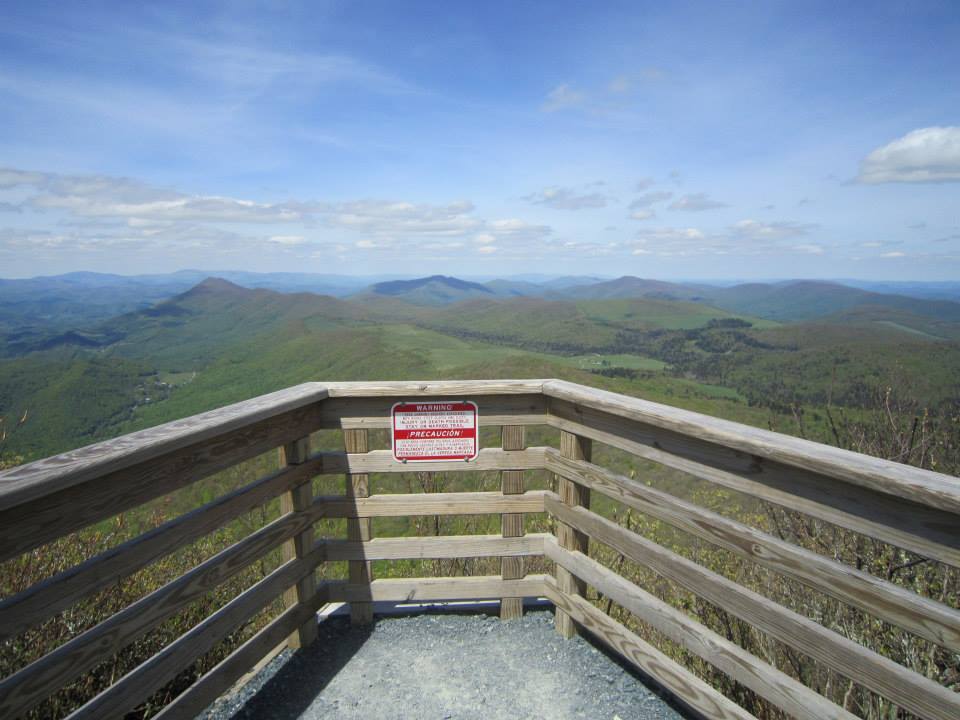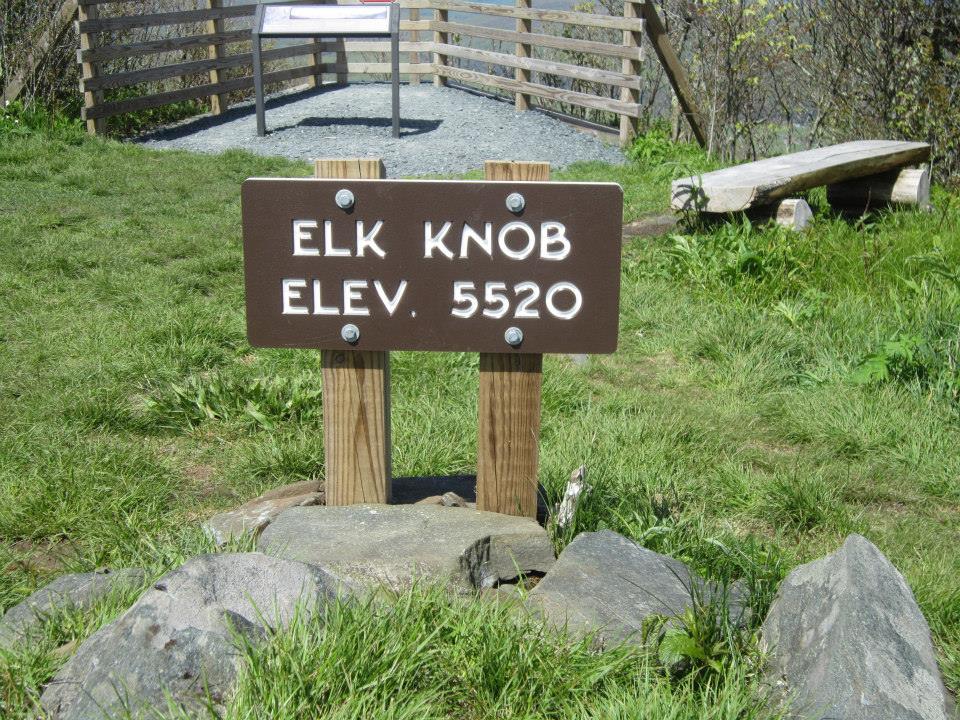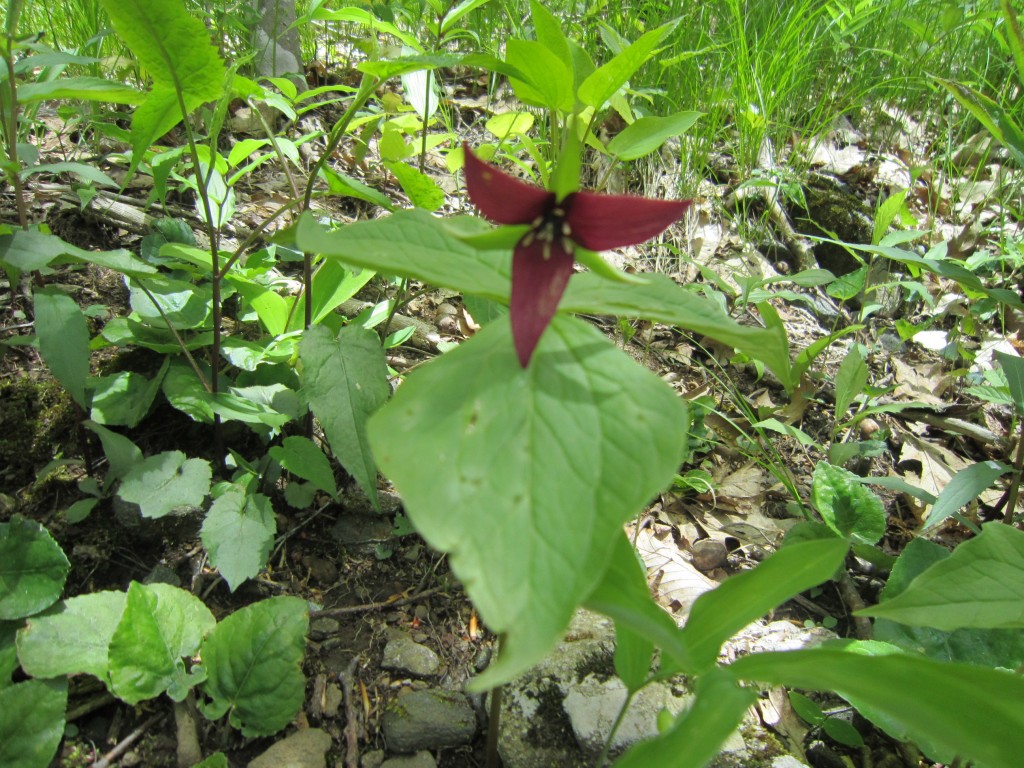Last weekend the mountains were calling. On Friday we headed west, through the Yadkin Valley, then over the Blue Ridge escarpment to Elk Knob State Park in Meat Camp, North Carolina. The park is about nine miles north of Boone and only three hours from Durham.
(For those of you who are wondering, Meat Camp got its name from Daniel Boone and other hunters of the day who would pack their animal kill there before taking it back to the lowlands. It is not, contrary to what some might think, an Atkins-style weight loss camp.)
Elk Knob is North Carolina’s youngest state park, and owes its existence to the efforts of the Nature Conservatory and local landowners who kept it from being developed. The 3000-plus acres include a 2-mile trail to the summit of Elk Knob, Watauga County’s second-highest peak. The trail was completed in 2011.
The park is like nothing else I’ve ever seen in North Carolina, and I’m not being hyperbolic. I was in awe the whole time I was there. Once we reached about 5,000 feet, I started getting a little light-headed, as if I were hiking the southern Rockies again. Perhaps that might explain part of my euphoria.
Elk Knob is one of twelve mountains north of Boone known as the Amphibolite Mountains, composed of blackish-grey metamorphic rock known as amphibolite. We saw tons of it, as well as huge pieces of quartz. For a while I couldn’t stop taking pictures of all the interesting rocks.
These rocks are rich in nutrients, and as a result you find a lot of interesting plant life there, including endangered plants like Gray’s Lily. As soon as we got out of the car, we saw Trilliums everywhere, some together in large clusters. A kind stranger, probably as giddy as we were, told us that the White Trilliums become pink as they get older. We saw plenty of both.
Shawnna loved the Purple Trillium, also known as the Wake-Robin.
The amphibolite also makes the soil more alkaline than usual (a lot of mountain soil is acidic.) One consequence of this is that you don’t see any acidic-loving rhododendron at Elk Knob. Rhododendrons typically cover the western North Carolina landscape, but not here. In its absence there is an incredible variety of tree life. A lot of the trees on the mountain were ones that you’d find in northern hardwood forests. Take the buckeye, for example; Ohio usually comes to mind. Or the yellow birch, which is the provincial tree of Quebec.
Closer to the top, the trees became more stubby and gnarled, hardened from years of bitter winters and harsh winds. As we ascended, we both became somewhat light-headed. I guess we’ve lived in the lowlands too long. Next time we’ll stop and have a picnic at the stone bench halfway up the mountain.
The summit was breathtakingly beautiful. On the north side you could see as far as Pilot Mountain, near Winston-Salem. On the south side you could see as far as Mount Mitchell. And of course, you could see all the mountains in between. It was a true Blue Ridge panorama.
I took a nice shot of Snake Mountain, Elk Knob’s neighbor and another member of the Amphibolite range. It sits on the Tennessee border, near the community of Trade, Tennessee. In the 1970s, my mom taught at Trade Elementary School, which sat at the foot of Snake Mountain. One of my earliest memories is taking a field trip to Snake Mountain with my mom’s class as a three-year old. I rode in a little red wagon while the kids from my mom’s class took turns pulling me up the mountain.
Looking at the gap between the two mountains, I could make out the course of the Old Buffalo Trail, first used by migrating buffalo, then Native Americans, then the European settlers as they pushed westward.
We’ll be back to Elk Knob soon.










